Johns Hopkins Gazette: April 8, 1996

April 8, 1996 -- Vol. 25 No. 28
Johns Hopkins University's Past Presidents
A Legacy of Achievement
Compiled from material in the Ferdinand Hamburger Jr.
Archives and in Johns Hopkins: Portrait of a University,
by John C. Schmidt. Photos are from Gazette archive files.
Daniel Coit Gilman
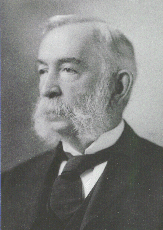 A geographer, Gilman was lured from the presidency of the University of California at Berkeley by the
trustees to become Johns Hopkins first president. He was a
proven leader who could attract known scholars and identify
promising young faculty. Gilman was interested in establishing a
university to promote the highest standards of scholarship and
research in the sciences and in the humanities. His formal
inauguration, on Feb. 22, 1876, has become Commemoration Day, the
day on which many university presidents have chosen to be
installed in office.
A geographer, Gilman was lured from the presidency of the University of California at Berkeley by the
trustees to become Johns Hopkins first president. He was a
proven leader who could attract known scholars and identify
promising young faculty. Gilman was interested in establishing a
university to promote the highest standards of scholarship and
research in the sciences and in the humanities. His formal
inauguration, on Feb. 22, 1876, has become Commemoration Day, the
day on which many university presidents have chosen to be
installed in office.
Ira Remsen
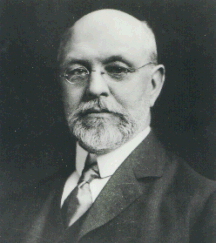 Although he was still a young man, Ira Remsen s reputation
as a chemist prompted President Gilman to appoint him as one of
the university s five original faculty members. In 1879 he
founded the American Chemical Journal, acknowledged as
"the first really scientific journal of research chemistry in
America." During his years as Hopkins president, several endowed
chairs were established, the undergraduate program was expanded
from three to four years, and a successful fundrais-ing drive
allowed building on the Homewood campus to begin.
Although he was still a young man, Ira Remsen s reputation
as a chemist prompted President Gilman to appoint him as one of
the university s five original faculty members. In 1879 he
founded the American Chemical Journal, acknowledged as
"the first really scientific journal of research chemistry in
America." During his years as Hopkins president, several endowed
chairs were established, the undergraduate program was expanded
from three to four years, and a successful fundrais-ing drive
allowed building on the Homewood campus to begin.
Frank Goodnow
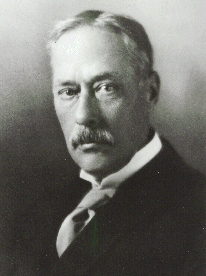 Frank Goodnow was a political scientist with a long record
of public service to both U.S. and foreign governments. His
tenure was marked by rapid university growth, including an
increase in the university income from $500,000 to nearly $2.5
million annually. While he is credited with wisely managing
university finances, he may be remembered best for his attempt to
eliminate the undergraduate program and the bachelor s degree by
cutting the first two years of undergraduate work. Although the
"Goodnow Plan" was briefly instituted, it proved a failure.
Frank Goodnow was a political scientist with a long record
of public service to both U.S. and foreign governments. His
tenure was marked by rapid university growth, including an
increase in the university income from $500,000 to nearly $2.5
million annually. While he is credited with wisely managing
university finances, he may be remembered best for his attempt to
eliminate the undergraduate program and the bachelor s degree by
cutting the first two years of undergraduate work. Although the
"Goodnow Plan" was briefly instituted, it proved a failure.
Joseph Ames
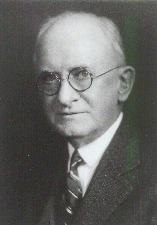 Joseph Ames came to Johns Hopkins as a freshman in 1883 and
remained affiliated with the university until his death 60 years
later. A physicist, he published four textbooks in his field,
became professor of physics and director of the Physics
Laboratory and eventually served as head of the executive
committee that would evolve into the National Aeronautics and
Space Administration. His gift for administration led to his
becoming dean in 1924, provost in 1926 and president in 1929. His
six-year tenure was the most difficult for the young university
as the Great Depression contributed to a fivefold increase of the
university s deficit.
Joseph Ames came to Johns Hopkins as a freshman in 1883 and
remained affiliated with the university until his death 60 years
later. A physicist, he published four textbooks in his field,
became professor of physics and director of the Physics
Laboratory and eventually served as head of the executive
committee that would evolve into the National Aeronautics and
Space Administration. His gift for administration led to his
becoming dean in 1924, provost in 1926 and president in 1929. His
six-year tenure was the most difficult for the young university
as the Great Depression contributed to a fivefold increase of the
university s deficit.
Isaiah Bowman
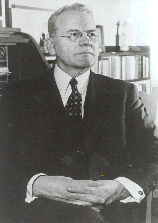 Isaiah Bowman assumed the presidency at the height of the
Depression. Among his achievements was balancing the budget by
raising an endowment fund of more than $1 million. When the
United States entered the war, Bowman became a special adviser to
the secretary of state and was later a member of the American
delegation at the conference at which the United Nations was
founded. At war s end, Bowman directed the restructuring of the
university to accommodate returning servicemen.
Isaiah Bowman assumed the presidency at the height of the
Depression. Among his achievements was balancing the budget by
raising an endowment fund of more than $1 million. When the
United States entered the war, Bowman became a special adviser to
the secretary of state and was later a member of the American
delegation at the conference at which the United Nations was
founded. At war s end, Bowman directed the restructuring of the
university to accommodate returning servicemen.
Detlev Bronk
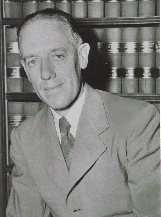 Detlev Bronk, credited with formulating the modern theory of
the science of biophysics, picked up where President Bowman had
left off reshaping the postwar university. Bronk believed firmly
in academic freedom. He resisted vigorously an attempt by
Wisconsin Sen. Joseph McCarthy to have Hopkins dismiss Professor
Owen Lattimore prior to his trial on espionage charges. He tried
unsuccessfully to revive the "Goodnow Plan" but succeeded in
acquiring the School of Advanced International Studies in
Washington.
Detlev Bronk, credited with formulating the modern theory of
the science of biophysics, picked up where President Bowman had
left off reshaping the postwar university. Bronk believed firmly
in academic freedom. He resisted vigorously an attempt by
Wisconsin Sen. Joseph McCarthy to have Hopkins dismiss Professor
Owen Lattimore prior to his trial on espionage charges. He tried
unsuccessfully to revive the "Goodnow Plan" but succeeded in
acquiring the School of Advanced International Studies in
Washington.
Lowell Reed
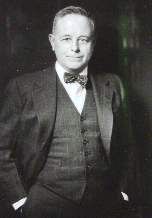 Lowell Reed was 67 and had just retired from a distinguished
35-year career as a research scientist in biostatistics and
public health administration at Hopkins when he was asked to
serve as university president, having previously held posts as
dean and director of the School of Hygiene nd Public Health and
later as vice president in charge of medical activities. During
his three-year administration, Reed continued Hopkins postwar
growth, overseeing the construction of Shriver and Ames halls and
adding a second set of Alumni Memorial Residences.
Lowell Reed was 67 and had just retired from a distinguished
35-year career as a research scientist in biostatistics and
public health administration at Hopkins when he was asked to
serve as university president, having previously held posts as
dean and director of the School of Hygiene nd Public Health and
later as vice president in charge of medical activities. During
his three-year administration, Reed continued Hopkins postwar
growth, overseeing the construction of Shriver and Ames halls and
adding a second set of Alumni Memorial Residences.
Milton S. Eisenhower
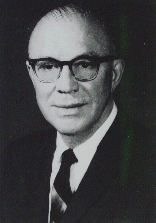 Milton S. Eisenhower, youngest brother of U.S. President
Dwight Eisenhower, is the only Hopkins president to serve two
non-consecutive terms. During his first term, the university
income tripled, the endowment doubled and new construction
included the athletic center and the library at Homewood that
would bear his name. Eisenhower was well-liked by faculty and
students, and upon his retirement in 1967, he was given the title
president emeritus in recognition of his devoted service. He was
coaxed out of retirement for 10 months in 1971-72 after Lincoln
Gordon resigned.
Milton S. Eisenhower, youngest brother of U.S. President
Dwight Eisenhower, is the only Hopkins president to serve two
non-consecutive terms. During his first term, the university
income tripled, the endowment doubled and new construction
included the athletic center and the library at Homewood that
would bear his name. Eisenhower was well-liked by faculty and
students, and upon his retirement in 1967, he was given the title
president emeritus in recognition of his devoted service. He was
coaxed out of retirement for 10 months in 1971-72 after Lincoln
Gordon resigned.
Lincoln Gordon
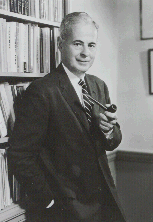 Former ambassador to Brazil and assistant secretary of state
for inter-American affairs, Lincoln Gordon served as president
for four tumultuous years, not only for Hopkins but for the
country. Students and faculty, critical of the country s
involvement in Vietnam, for a brief time occupied the
university s executive offices. Citing increasing criticism from
faculty, Gordon resigned in March 1971, but not before
introducing coeducation to the undergraduate program in 1970.
Former ambassador to Brazil and assistant secretary of state
for inter-American affairs, Lincoln Gordon served as president
for four tumultuous years, not only for Hopkins but for the
country. Students and faculty, critical of the country s
involvement in Vietnam, for a brief time occupied the
university s executive offices. Citing increasing criticism from
faculty, Gordon resigned in March 1971, but not before
introducing coeducation to the undergraduate program in 1970.
Steven Muller
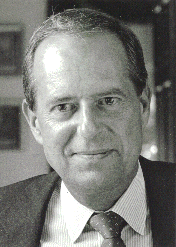 Steven Muller had held the post of provost and vice president for only
10 months when the trustees named him to succeed Lincoln Gordon. He also was
named president of Hopkins Hospital, a distinction held only by Daniel Coit
Gilman. Muller guided the university as it assumed responsibility for the
Peabody Conservatory, presided over the construction of the Bloomberg Center
for Physics and Astronomy and the Space Telescope Science Institute and
established or enlarged academic centers in downtown Baltimore, in Montgomery
County, at the Applied Physics Laboratory and in Nanjing, China. He concluded
a record $450 million fundraising drive one year early and was named president
emeritus upon his retirement in 1990.
Steven Muller had held the post of provost and vice president for only
10 months when the trustees named him to succeed Lincoln Gordon. He also was
named president of Hopkins Hospital, a distinction held only by Daniel Coit
Gilman. Muller guided the university as it assumed responsibility for the
Peabody Conservatory, presided over the construction of the Bloomberg Center
for Physics and Astronomy and the Space Telescope Science Institute and
established or enlarged academic centers in downtown Baltimore, in Montgomery
County, at the Applied Physics Laboratory and in Nanjing, China. He concluded
a record $450 million fundraising drive one year early and was named president
emeritus upon his retirement in 1990.
William C. Richardson
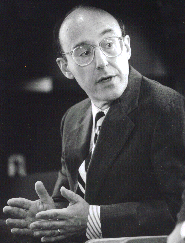 One of William C. Richardson s priorities upon becoming Hopkins 11th
president was to restore confidence in the School of Arts and Sciences while
pursuing the recommendations of the five-year scaling-down plan. Richardson s
tenure was marked by the beginning of a period of close government scrutiny of
higher education and a reduction in federal and state grants to private and
research universities. During his term in office, alumnus Zanvyl Krieger
pledged $50 million as part of a challenge aimed at increasing the Arts and
Sciences endowment by $100 million.
One of William C. Richardson s priorities upon becoming Hopkins 11th
president was to restore confidence in the School of Arts and Sciences while
pursuing the recommendations of the five-year scaling-down plan. Richardson s
tenure was marked by the beginning of a period of close government scrutiny of
higher education and a reduction in federal and state grants to private and
research universities. During his term in office, alumnus Zanvyl Krieger
pledged $50 million as part of a challenge aimed at increasing the Arts and
Sciences endowment by $100 million.
Daniel Nathans
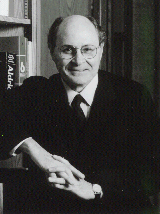 Nobel Prize winner Daniel Nathans considered it his obligation to accept
the post of interim president (the first such designation in university
history) while the trustees searched for President Richardson s replacement.
Nathans, who has been a faculty member for 33 years, said, "I think it s
important to have a smooth transition to keep the momentum going." And he did
that. During his brief tenure, Nathans has accepted for the university a $55
million gift from trustee and alumnus Michael Bloomberg, which has kept the
Hopkins Initiative on track toward its goal of $900 million by the year
2000.
Nobel Prize winner Daniel Nathans considered it his obligation to accept
the post of interim president (the first such designation in university
history) while the trustees searched for President Richardson s replacement.
Nathans, who has been a faculty member for 33 years, said, "I think it s
important to have a smooth transition to keep the momentum going." And he did
that. During his brief tenure, Nathans has accepted for the university a $55
million gift from trustee and alumnus Michael Bloomberg, which has kept the
Hopkins Initiative on track toward its goal of $900 million by the year
2000.
 Although he was still a young man, Ira Remsen s reputation
as a chemist prompted President Gilman to appoint him as one of
the university s five original faculty members. In 1879 he
founded the American Chemical Journal, acknowledged as
"the first really scientific journal of research chemistry in
America." During his years as Hopkins president, several endowed
chairs were established, the undergraduate program was expanded
from three to four years, and a successful fundrais-ing drive
allowed building on the Homewood campus to begin.
Although he was still a young man, Ira Remsen s reputation
as a chemist prompted President Gilman to appoint him as one of
the university s five original faculty members. In 1879 he
founded the American Chemical Journal, acknowledged as
"the first really scientific journal of research chemistry in
America." During his years as Hopkins president, several endowed
chairs were established, the undergraduate program was expanded
from three to four years, and a successful fundrais-ing drive
allowed building on the Homewood campus to begin.
 A geographer, Gilman was lured from the presidency of the University of California at Berkeley by the
trustees to become Johns Hopkins first president. He was a
proven leader who could attract known scholars and identify
promising young faculty. Gilman was interested in establishing a
university to promote the highest standards of scholarship and
research in the sciences and in the humanities. His formal
inauguration, on Feb. 22, 1876, has become Commemoration Day, the
day on which many university presidents have chosen to be
installed in office.
A geographer, Gilman was lured from the presidency of the University of California at Berkeley by the
trustees to become Johns Hopkins first president. He was a
proven leader who could attract known scholars and identify
promising young faculty. Gilman was interested in establishing a
university to promote the highest standards of scholarship and
research in the sciences and in the humanities. His formal
inauguration, on Feb. 22, 1876, has become Commemoration Day, the
day on which many university presidents have chosen to be
installed in office. Frank Goodnow was a political scientist with a long record
of public service to both U.S. and foreign governments. His
tenure was marked by rapid university growth, including an
increase in the university income from $500,000 to nearly $2.5
million annually. While he is credited with wisely managing
university finances, he may be remembered best for his attempt to
eliminate the undergraduate program and the bachelor s degree by
cutting the first two years of undergraduate work. Although the
"Goodnow Plan" was briefly instituted, it proved a failure.
Frank Goodnow was a political scientist with a long record
of public service to both U.S. and foreign governments. His
tenure was marked by rapid university growth, including an
increase in the university income from $500,000 to nearly $2.5
million annually. While he is credited with wisely managing
university finances, he may be remembered best for his attempt to
eliminate the undergraduate program and the bachelor s degree by
cutting the first two years of undergraduate work. Although the
"Goodnow Plan" was briefly instituted, it proved a failure.  Joseph Ames came to Johns Hopkins as a freshman in 1883 and
remained affiliated with the university until his death 60 years
later. A physicist, he published four textbooks in his field,
became professor of physics and director of the Physics
Laboratory and eventually served as head of the executive
committee that would evolve into the National Aeronautics and
Space Administration. His gift for administration led to his
becoming dean in 1924, provost in 1926 and president in 1929. His
six-year tenure was the most difficult for the young university
as the Great Depression contributed to a fivefold increase of the
university s deficit.
Joseph Ames came to Johns Hopkins as a freshman in 1883 and
remained affiliated with the university until his death 60 years
later. A physicist, he published four textbooks in his field,
became professor of physics and director of the Physics
Laboratory and eventually served as head of the executive
committee that would evolve into the National Aeronautics and
Space Administration. His gift for administration led to his
becoming dean in 1924, provost in 1926 and president in 1929. His
six-year tenure was the most difficult for the young university
as the Great Depression contributed to a fivefold increase of the
university s deficit.  Isaiah Bowman assumed the presidency at the height of the
Depression. Among his achievements was balancing the budget by
raising an endowment fund of more than $1 million. When the
United States entered the war, Bowman became a special adviser to
the secretary of state and was later a member of the American
delegation at the conference at which the United Nations was
founded. At war s end, Bowman directed the restructuring of the
university to accommodate returning servicemen.
Isaiah Bowman assumed the presidency at the height of the
Depression. Among his achievements was balancing the budget by
raising an endowment fund of more than $1 million. When the
United States entered the war, Bowman became a special adviser to
the secretary of state and was later a member of the American
delegation at the conference at which the United Nations was
founded. At war s end, Bowman directed the restructuring of the
university to accommodate returning servicemen. Detlev Bronk, credited with formulating the modern theory of
the science of biophysics, picked up where President Bowman had
left off reshaping the postwar university. Bronk believed firmly
in academic freedom. He resisted vigorously an attempt by
Wisconsin Sen. Joseph McCarthy to have Hopkins dismiss Professor
Owen Lattimore prior to his trial on espionage charges. He tried
unsuccessfully to revive the "Goodnow Plan" but succeeded in
acquiring the School of Advanced International Studies in
Washington.
Detlev Bronk, credited with formulating the modern theory of
the science of biophysics, picked up where President Bowman had
left off reshaping the postwar university. Bronk believed firmly
in academic freedom. He resisted vigorously an attempt by
Wisconsin Sen. Joseph McCarthy to have Hopkins dismiss Professor
Owen Lattimore prior to his trial on espionage charges. He tried
unsuccessfully to revive the "Goodnow Plan" but succeeded in
acquiring the School of Advanced International Studies in
Washington. Lowell Reed was 67 and had just retired from a distinguished
35-year career as a research scientist in biostatistics and
public health administration at Hopkins when he was asked to
serve as university president, having previously held posts as
dean and director of the School of Hygiene nd Public Health and
later as vice president in charge of medical activities. During
his three-year administration, Reed continued Hopkins postwar
growth, overseeing the construction of Shriver and Ames halls and
adding a second set of Alumni Memorial Residences.
Lowell Reed was 67 and had just retired from a distinguished
35-year career as a research scientist in biostatistics and
public health administration at Hopkins when he was asked to
serve as university president, having previously held posts as
dean and director of the School of Hygiene nd Public Health and
later as vice president in charge of medical activities. During
his three-year administration, Reed continued Hopkins postwar
growth, overseeing the construction of Shriver and Ames halls and
adding a second set of Alumni Memorial Residences. Milton S. Eisenhower, youngest brother of U.S. President
Dwight Eisenhower, is the only Hopkins president to serve two
non-consecutive terms. During his first term, the university
income tripled, the endowment doubled and new construction
included the athletic center and the library at Homewood that
would bear his name. Eisenhower was well-liked by faculty and
students, and upon his retirement in 1967, he was given the title
president emeritus in recognition of his devoted service. He was
coaxed out of retirement for 10 months in 1971-72 after Lincoln
Gordon resigned.
Milton S. Eisenhower, youngest brother of U.S. President
Dwight Eisenhower, is the only Hopkins president to serve two
non-consecutive terms. During his first term, the university
income tripled, the endowment doubled and new construction
included the athletic center and the library at Homewood that
would bear his name. Eisenhower was well-liked by faculty and
students, and upon his retirement in 1967, he was given the title
president emeritus in recognition of his devoted service. He was
coaxed out of retirement for 10 months in 1971-72 after Lincoln
Gordon resigned. Former ambassador to Brazil and assistant secretary of state
for inter-American affairs, Lincoln Gordon served as president
for four tumultuous years, not only for Hopkins but for the
country. Students and faculty, critical of the country s
involvement in Vietnam, for a brief time occupied the
university s executive offices. Citing increasing criticism from
faculty, Gordon resigned in March 1971, but not before
introducing coeducation to the undergraduate program in 1970.
Former ambassador to Brazil and assistant secretary of state
for inter-American affairs, Lincoln Gordon served as president
for four tumultuous years, not only for Hopkins but for the
country. Students and faculty, critical of the country s
involvement in Vietnam, for a brief time occupied the
university s executive offices. Citing increasing criticism from
faculty, Gordon resigned in March 1971, but not before
introducing coeducation to the undergraduate program in 1970. Steven Muller had held the post of provost and vice president for only
10 months when the trustees named him to succeed Lincoln Gordon. He also was
named president of Hopkins Hospital, a distinction held only by Daniel Coit
Gilman. Muller guided the university as it assumed responsibility for the
Peabody Conservatory, presided over the construction of the Bloomberg Center
for Physics and Astronomy and the Space Telescope Science Institute and
established or enlarged academic centers in downtown Baltimore, in Montgomery
County, at the Applied Physics Laboratory and in Nanjing, China. He concluded
a record $450 million fundraising drive one year early and was named president
emeritus upon his retirement in 1990.
Steven Muller had held the post of provost and vice president for only
10 months when the trustees named him to succeed Lincoln Gordon. He also was
named president of Hopkins Hospital, a distinction held only by Daniel Coit
Gilman. Muller guided the university as it assumed responsibility for the
Peabody Conservatory, presided over the construction of the Bloomberg Center
for Physics and Astronomy and the Space Telescope Science Institute and
established or enlarged academic centers in downtown Baltimore, in Montgomery
County, at the Applied Physics Laboratory and in Nanjing, China. He concluded
a record $450 million fundraising drive one year early and was named president
emeritus upon his retirement in 1990. One of William C. Richardson s priorities upon becoming Hopkins 11th
president was to restore confidence in the School of Arts and Sciences while
pursuing the recommendations of the five-year scaling-down plan. Richardson s
tenure was marked by the beginning of a period of close government scrutiny of
higher education and a reduction in federal and state grants to private and
research universities. During his term in office, alumnus Zanvyl Krieger
pledged $50 million as part of a challenge aimed at increasing the Arts and
Sciences endowment by $100 million.
One of William C. Richardson s priorities upon becoming Hopkins 11th
president was to restore confidence in the School of Arts and Sciences while
pursuing the recommendations of the five-year scaling-down plan. Richardson s
tenure was marked by the beginning of a period of close government scrutiny of
higher education and a reduction in federal and state grants to private and
research universities. During his term in office, alumnus Zanvyl Krieger
pledged $50 million as part of a challenge aimed at increasing the Arts and
Sciences endowment by $100 million. Nobel Prize winner Daniel Nathans considered it his obligation to accept
the post of interim president (the first such designation in university
history) while the trustees searched for President Richardson s replacement.
Nathans, who has been a faculty member for 33 years, said, "I think it s
important to have a smooth transition to keep the momentum going." And he did
that. During his brief tenure, Nathans has accepted for the university a $55
million gift from trustee and alumnus Michael Bloomberg, which has kept the
Hopkins Initiative on track toward its goal of $900 million by the year
2000.
Nobel Prize winner Daniel Nathans considered it his obligation to accept
the post of interim president (the first such designation in university
history) while the trustees searched for President Richardson s replacement.
Nathans, who has been a faculty member for 33 years, said, "I think it s
important to have a smooth transition to keep the momentum going." And he did
that. During his brief tenure, Nathans has accepted for the university a $55
million gift from trustee and alumnus Michael Bloomberg, which has kept the
Hopkins Initiative on track toward its goal of $900 million by the year
2000.